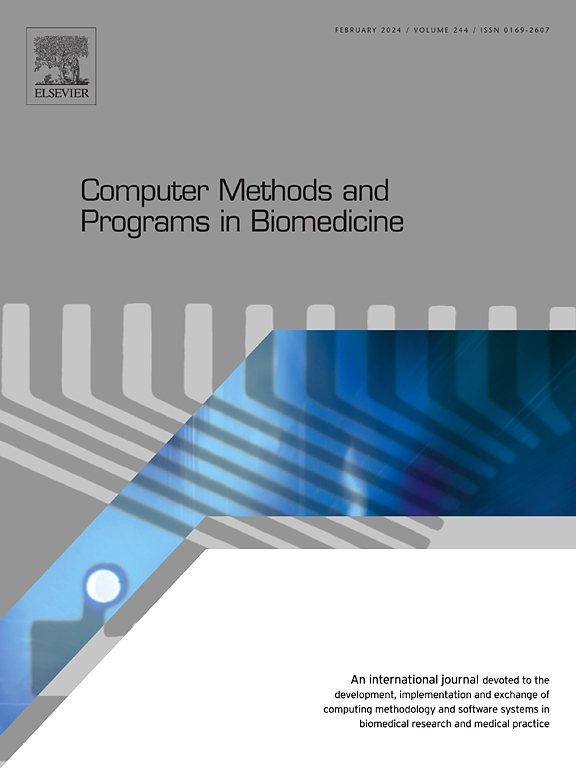Enhancing thrombosis prevention in medical devices: The role of turbulence in washout performance using FDA benchmark nozzle model
IF 4.9
2区 医学
Q1 COMPUTER SCIENCE, INTERDISCIPLINARY APPLICATIONS
引用次数: 0
Abstract
Background and objectives
Thrombosis presents a significant and potentially lethal risk in medical devices. Turbulence has been associated with increased thrombosis risk, primarily due to heightened shear stress and resultant blood damage. However, it can be inferred that turbulence might also enhance washout performance through efficient transport and mixing, thereby mitigating thrombosis. This study explores the underappreciated role of turbulence.
Methods
The FDA benchmark nozzle model was used as a representative framework for medical devices. To elucidate the isolated role of turbulence on washout performance, comparative simulations were conducted at Reynolds numbers of 500 and 6500 using Large Eddy Simulation (LES) and Menter's Shear Stress Transport (SST) k-ω turbulence models. Washout performance, a critical indicator in thrombosis, is evaluated by a passive scalar transport model.
Results
The validation results align well with published data, confirming the reliability of the simulations. Reynolds numbers and turbulence models play a crucial role in the washout performance. Turbulence improves volume washout by disrupting flow recirculation zones and enhancing the mixing of old and new blood. Furthermore, turbulence aids in surface washout by altering flow patterns in the near-wall region and increasing wall shear stress.
Conclusion and significance
The improved washout and dynamic environment facilitated by turbulence potentially minimize platelet adhesion and aggregation, which ultimately benefits the anti-thrombotic properties of medical devices. This research offers a novel perspective on the role of turbulence in thrombosis, extending beyond its traditionally recognized detrimental effects, and provides valuable insights into the design of specific flow patterns in achieving optimal washout performance in medical device applications. Further research is warranted to explore how to effectively leverage the washout-enhancing effects of turbulence while minimizing its potential adverse impacts.
求助全文
约1分钟内获得全文
求助全文
来源期刊

Computer methods and programs in biomedicine
工程技术-工程:生物医学
CiteScore
12.30
自引率
6.60%
发文量
601
审稿时长
135 days
期刊介绍:
To encourage the development of formal computing methods, and their application in biomedical research and medical practice, by illustration of fundamental principles in biomedical informatics research; to stimulate basic research into application software design; to report the state of research of biomedical information processing projects; to report new computer methodologies applied in biomedical areas; the eventual distribution of demonstrable software to avoid duplication of effort; to provide a forum for discussion and improvement of existing software; to optimize contact between national organizations and regional user groups by promoting an international exchange of information on formal methods, standards and software in biomedicine.
Computer Methods and Programs in Biomedicine covers computing methodology and software systems derived from computing science for implementation in all aspects of biomedical research and medical practice. It is designed to serve: biochemists; biologists; geneticists; immunologists; neuroscientists; pharmacologists; toxicologists; clinicians; epidemiologists; psychiatrists; psychologists; cardiologists; chemists; (radio)physicists; computer scientists; programmers and systems analysts; biomedical, clinical, electrical and other engineers; teachers of medical informatics and users of educational software.
 求助内容:
求助内容: 应助结果提醒方式:
应助结果提醒方式:


